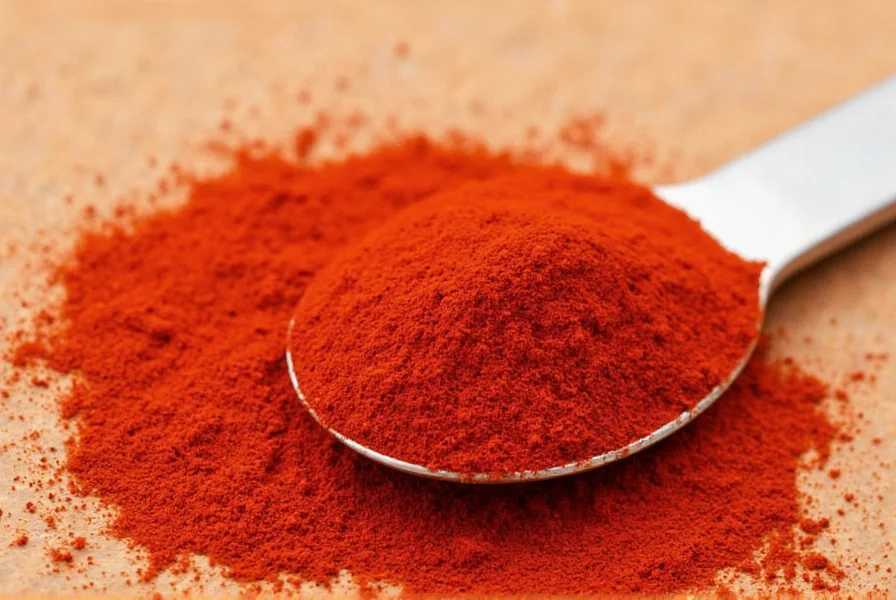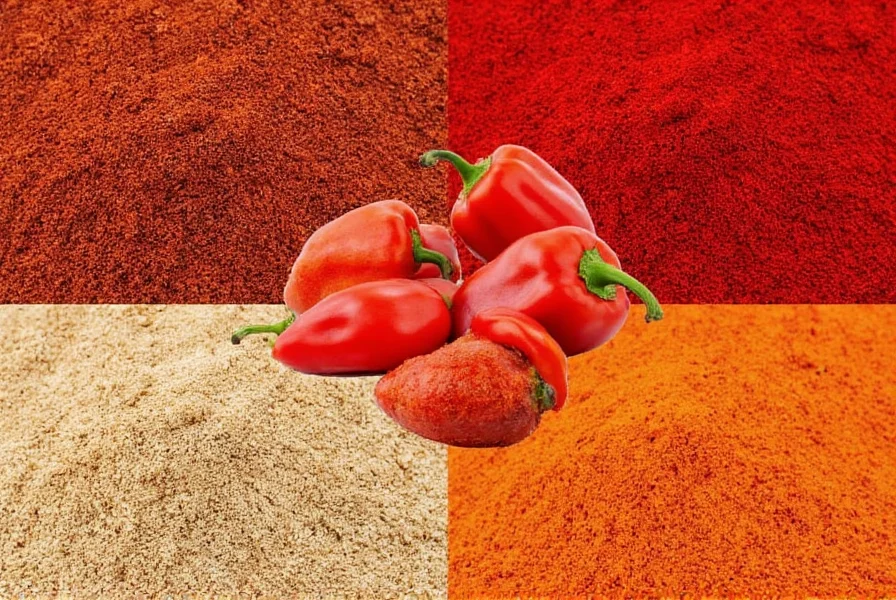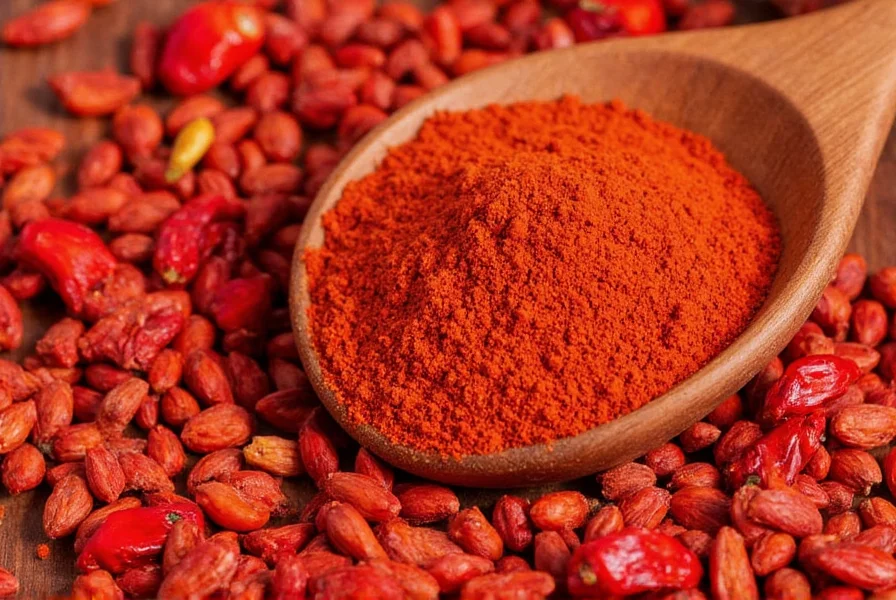Understanding the diverse world of paprika transforms ordinary dishes into culinary masterpieces. This vibrant red spice, derived from ground peppers, varies dramatically based on pepper variety, growing conditions, and processing methods. While many cooks reach for paprika as a single ingredient, recognizing the distinct characteristics of different paprika types elevates your cooking from good to exceptional.
Origins and History of Paprika
Paprika's journey began in the Americas, where indigenous peoples cultivated peppers for thousands of years. Spanish explorers brought peppers to Europe in the 16th century, where they quickly spread across the continent. Hungary adopted paprika enthusiastically in the 19th century, making it central to their national cuisine. Spain developed its own smoked paprika tradition, while other regions like California and Hungary perfected their distinctive varieties.
| Type of Paprika | Heat Level (Scoville) | Flavor Profile | Best Culinary Uses |
|---|---|---|---|
| Hungarian Sweet | 0-150 | Bright, sweet, slightly fruity | Goulash, chicken paprikash, deviled eggs |
| Spanish Smoked (Pimentón) | 100-500 | Deep smoky, earthy, complex | Paella, chorizo, roasted vegetables |
| Hungarian Hot | 5,000-15,000 | Spicy with sweet undertones | Spicy stews, marinades, spice rubs |
| Sweet California | 100-500 | Mild, sweet, less complex | Everyday cooking, color enhancement |
Hungarian Paprika Varieties: The Gold Standard
Hungary produces eight official paprika varieties, ranging from édesnödéli (mild southern sweet) to erős (hot and strong). The most prized comes from the town of Szeged, where specific soil conditions create peppers with exceptional color and flavor. Hungarian sweet paprika delivers vibrant red color without significant heat, making it ideal for traditional dishes like goulash where color matters as much as flavor.
When shopping for authentic Hungarian paprika, look for the EU Protected Designation of Origin (PDO) label. This guarantees the paprika was produced in specific Hungarian regions using traditional methods. The finest Hungarian paprika undergoes a careful process where peppers are harvested at peak ripeness, air-dried naturally, and stone-ground to preserve flavor compounds.

Spanish Smoked Paprika: Pimentón's Distinctive Character
Spain's contribution to the paprika world is pimentón, distinguished by its traditional smoking process. Peppers are dried over oak fires in special smokehouses called secaderos, infusing them with distinctive smoky notes. Spanish paprika comes in three main varieties:
- Pimentón Dulce - Sweet and mild with pronounced smokiness
- Pimentón Agridulce - Bittersweet with moderate smoke
- Pimentón Picante - Spicy with intense smoke flavor
The smoking process creates complex flavor compounds that transform dishes. Unlike liquid smoke, which can taste artificial, authentic smoked paprika provides nuanced smokiness that enhances rather than overwhelms. For traditional Spanish dishes like patatas bravas or fabada asturiana, using the correct pimentón is non-negotiable for authentic flavor.
Choosing the Right Paprika for Your Recipe
Selecting the appropriate paprika requires understanding both your recipe's needs and the spice's characteristics. Consider these factors when choosing:
- Heat tolerance - Sweet varieties work for family meals, while hot paprika suits adventurous palates
- Color requirements - Hungarian sweet paprika provides the most vibrant red hue
- Flavor complexity - Smoked paprika adds depth to simple dishes
- Regional authenticity - Traditional recipes often specify particular varieties
Professional chefs recommend keeping at least three paprika varieties in your pantry: a sweet Hungarian for color and mild flavor, a smoked Spanish for depth, and a hot variety for spice. This trio covers most culinary applications while allowing for creative substitutions when needed.
Paprika Substitution Guide: When You're Out of Your Preferred Type
Running out of specific paprika? These substitutions maintain dish integrity while working with available ingredients:
- No sweet paprika? Use mild chili powder (reduce by 25% as it's often spicier)
- No smoked paprika? Mix sweet paprika with a tiny pinch of cumin and liquid smoke
- No hot paprika? Combine sweet paprika with cayenne pepper (start with 1:4 ratio)
Remember that substitutions alter flavor profiles. For critical dishes like authentic Hungarian goulash, seeking the proper paprika variety yields significantly better results than substitutions. Specialty food stores and online retailers now make authentic paprika varieties accessible worldwide.

Maximizing Paprika's Flavor: Storage and Usage Tips
Paprika's vibrant color and flavor degrade quickly when exposed to light, heat, and air. Follow these professional storage techniques:
- Store in an airtight container away from light (dark glass or opaque container)
- Keep in a cool, dry place (refrigeration extends shelf life to 18-24 months)
- Buy whole peppers and grind as needed for maximum freshness
- Never store above the stove where heat accelerates degradation
When cooking with paprika, add it toward the end of cooking for maximum flavor impact. High heat can make paprika bitter, so many chefs bloom it in oil at low temperature before adding other ingredients. For soups and stews, stir in paprika during the last 10-15 minutes of cooking to preserve its delicate flavor compounds.
Common Paprika Questions Answered
What's the difference between paprika and chili powder?
Paprika is made solely from ground peppers, while chili powder typically contains a blend of spices including cumin, garlic powder, and oregano. Paprika ranges from sweet to hot with no additional ingredients, whereas chili powder is always a spice blend designed for specific flavor profiles.
Can I substitute smoked paprika for sweet paprika?
Yes, but with caution. Smoked paprika adds a distinct smoky flavor that sweet paprika lacks. For every teaspoon of sweet paprika required, use 3/4 teaspoon smoked paprika plus 1/4 teaspoon sweet paprika. In dishes where smoke isn't appropriate (like deviled eggs), this substitution significantly alters the intended flavor profile.
Why does my paprika taste bitter?
Bitter paprika usually results from excessive heat exposure. Paprika burns easily when added directly to hot oil or cooked too long. To prevent bitterness, bloom paprika in warm (not hot) oil, or add it during the last few minutes of cooking. Old paprika can also develop bitter notes as flavor compounds degrade over time.
How can I tell if my paprika is still fresh?
Fresh paprika has a vibrant red color and sweet, slightly fruity aroma. If it appears dull brownish-red or has little scent when rubbed between fingers, it's lost potency. Properly stored paprika maintains quality for 12-18 months. For critical dishes, replace paprika annually to ensure optimal flavor impact.
Which paprika is best for rubs and marinades?
Hungarian hot paprika or Spanish pimentón picante work best for rubs and marinades due to their robust flavor that penetrates proteins. For balanced rubs, combine sweet paprika (60%), smoked paprika (30%), and hot paprika (10%) with complementary spices like garlic powder and black pepper. The paprika's natural oils help other spices adhere to meats while contributing distinctive flavor.











 浙公网安备
33010002000092号
浙公网安备
33010002000092号 浙B2-20120091-4
浙B2-20120091-4